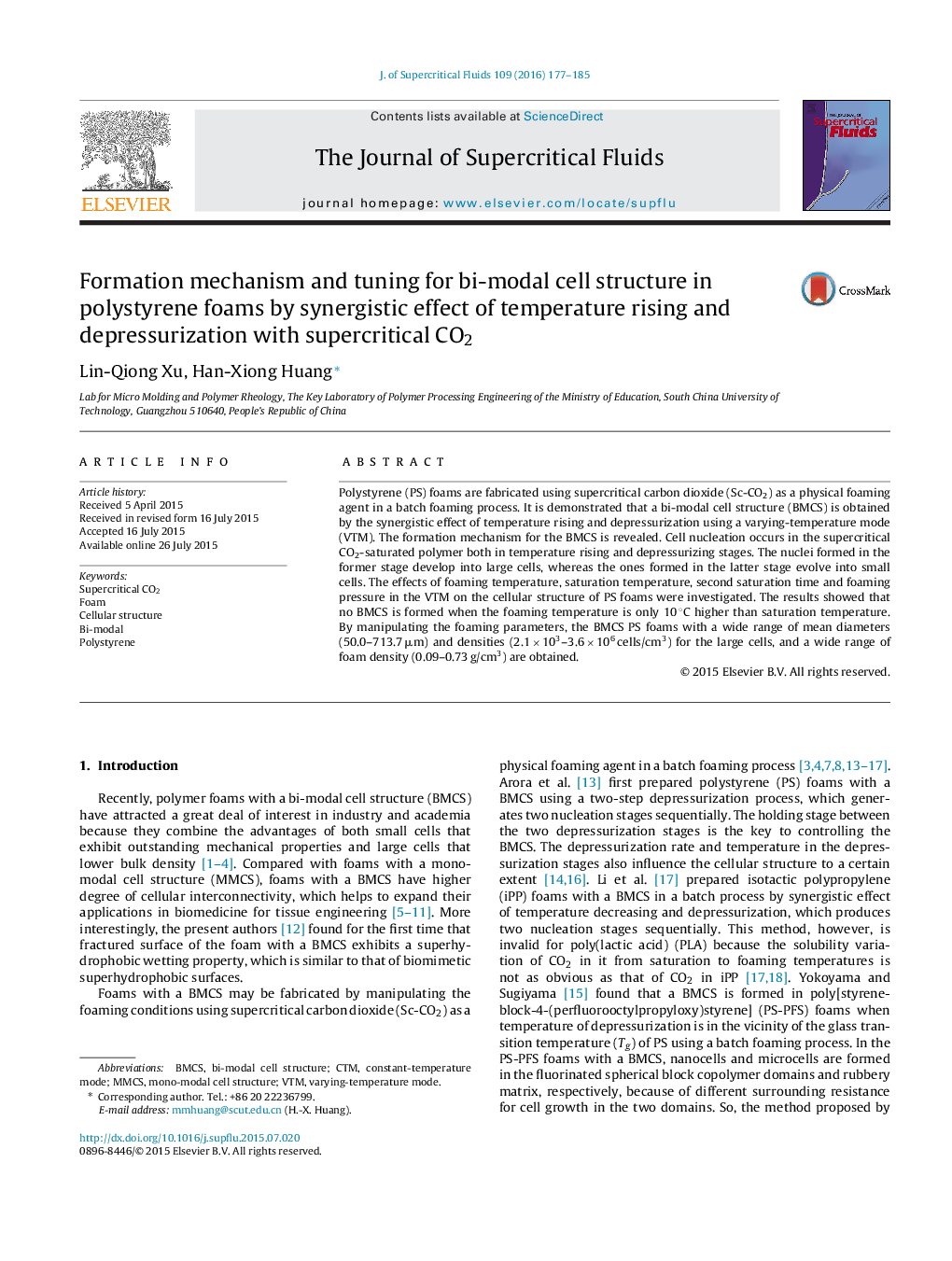| Article ID | Journal | Published Year | Pages | File Type |
|---|---|---|---|---|
| 230215 | The Journal of Supercritical Fluids | 2016 | 9 Pages |
•Varying-temperature mode was used for batch foaming.•Polystyrene foams with bi-modal cell structure were prepared.•Formation mechanism for bi-modal cell structure was revealed.•Bi-modal cell structure was tuned via manipulating foaming parameters.
Polystyrene (PS) foams are fabricated using supercritical carbon dioxide (Sc-CO2) as a physical foaming agent in a batch foaming process. It is demonstrated that a bi-modal cell structure (BMCS) is obtained by the synergistic effect of temperature rising and depressurization using a varying-temperature mode (VTM). The formation mechanism for the BMCS is revealed. Cell nucleation occurs in the supercritical CO2-saturated polymer both in temperature rising and depressurizing stages. The nuclei formed in the former stage develop into large cells, whereas the ones formed in the latter stage evolve into small cells. The effects of foaming temperature, saturation temperature, second saturation time and foaming pressure in the VTM on the cellular structure of PS foams were investigated. The results showed that no BMCS is formed when the foaming temperature is only 10 °C higher than saturation temperature. By manipulating the foaming parameters, the BMCS PS foams with a wide range of mean diameters (50.0–713.7 μm) and densities (2.1 × 103–3.6 × 106 cells/cm3) for the large cells, and a wide range of foam density (0.09–0.73 g/cm3) are obtained.
Graphical abstractFigure optionsDownload full-size imageDownload as PowerPoint slide
